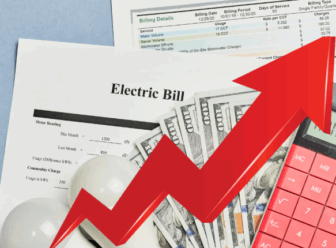Just look at yourself! The average American is responsible for around 23 tons of carbon dioxide emissions per year. Want to do something about it? Let’s talk about personal carbon rationing, trading, and taxes because there are movements afoot to promote all three. They basically address the individual, as opposed to or in addition to, industry.
1. Personal Carbon Rations/Limits/Caps
Personal carbon rationing involves the setting of a per person cap on carbon dioxide emissions. One such concept was developed in the UK by Mayer Hillman and Tina Fawcett in their book, “How We Can Save the Planet“. Rationing follows these principles:
- Every person, adult or child gets a ration.
- Rations are measurable and are tracked and audited.
- Rations are tradeable.
- The ration covers the direct energy used in the household and for personal travel. Each unit of energy like gasoline or electricity used results in the emission of carbon dioxide
- Every year, the ration size decreases.
There is currently a voluntary movement known as Carbon Rationing Action Groups, or CRAGs, where people set themselves emissions rations and then work to stay within the ration. This effort was started in the UK about 18 months ago. These groups are local, include around 8-10 people, meet regularly, set their per capita rations, audit their energy bills at the end of each “Carbon Year”, and sometimes penalize or reward their members for going over or under their rations. There are also individual tracking programs in the UK like CarbonDiet. Consistent protocols for tracking individual emissions are under development by groups like the “Avoiding Mass Extinctions Engine”(AMEE) applications programming interface.
The UK government is currently investigating the possibility of mandatory carbon rations, the use of carbon credit cards, and other ideas. Much of this work is being done through the Department for Environment Food and Rural Affairs, or DEFRA.
At this time a significant movement to regulate individuals does not seem to be underway in the US, though there is an increasing awareness of carbon footprints, carbon reductions, and other personal choices. There are US CRAGs now in Maryland, Georgia, and the Columbia Gorge region of Oregon/Washington. Other groups such as the Massachusetts Climate Action Network (MCAN) are developing programs to get groups of people started with carbon rationing types of efforts. The MCAN effort uses a program called the Low Carbon Diet developed by the Empowerment Institute.
2. Personal Carbon Trading and Carbon Credits/Offsets/Allowances
In order to trade carbon credits, you must first have a personal carbon ration/cap/limit. DEFRA has explored various trading options in its publication, “A Rough Guide to Individual Carbon Trading“. Essentially, “those who need or want to emit more than their allowance have to buy allowances from those who can emit less than their allowance.” This type of system is called a ‘cap-and-trade’. Any allowances over the cap or under becomes eligible for trade. Some CRAGs trade within their groups and are discussing ways of creating trades within the CRAG as a whole. The UK is considering a market-based trading scheme for personal carbon credits and Royal Society for the encouragement of Arts, Manufactures and Commerce (RSA) is piloting an individual trading program there called CarbonLimited. A lot is unknown about how these markets would actually work, if they would interact with other global markets like the Chicago Climate Exchange, etc. Right now, anyone (company, individual, whoever) can buy carbon offsets (basically a carbon credit) on the open market directly through the Chicago Climate Exchange or through brokers like Carbonfund. At this time, all programs are voluntary. The current cost of a ton of offsets/credits is about $4.50. Most cap-and-trade systems being explored in the US right now do not regulate the individual.
3. Personal Carbon Tax
The Wikipedia definition of a carbon tax “is a tax on energy sources which emit carbon dioxide into the atmosphere.” The purpose of the tax is to correct a market imperfection whereby a damage to a public good (the atmosphere) is paid for by the entity that causes the damage. In other words, the polluter pays. In the case of personal carbon taxes, the tax would most likely be associated with the carbon emissions associated with the purchase of a product. This system would initially apply to energy purchases such as a gallon of gasoline, therm of natural gas, or kilowatt-hour of electricity. Usually such taxes go to pay for the infrastructure of the enforcement scheme, public education, demonstration projects, and other government programs but are very inefficient at fixing the root of the problem, in this case, carbon dioxide pollution. Without the concept of a cap, these systems do not necessarily reduce pollution because people may just be willing to pay a premium to continue current energy usage. This has been the case in regards to gasoline taxes. The carbon tax being discussed right now in the US Congress is a “tax on any taxable fuel sold by the manufacturer, producer, or importer thereof.” This cost would be paid by the industry and then passed along to the consumer. Other models would tax the consumer directly.
There are other efforts out there in these areas and I encourage you to add to this post with your comments so that we can all learn more about them. I also encourage you to examine your own carbon emissions and find a way to reduce them, regardless of how you choose to do it.
This blog entry has been cross-posted at http://local-warming.blogspot.com/.




